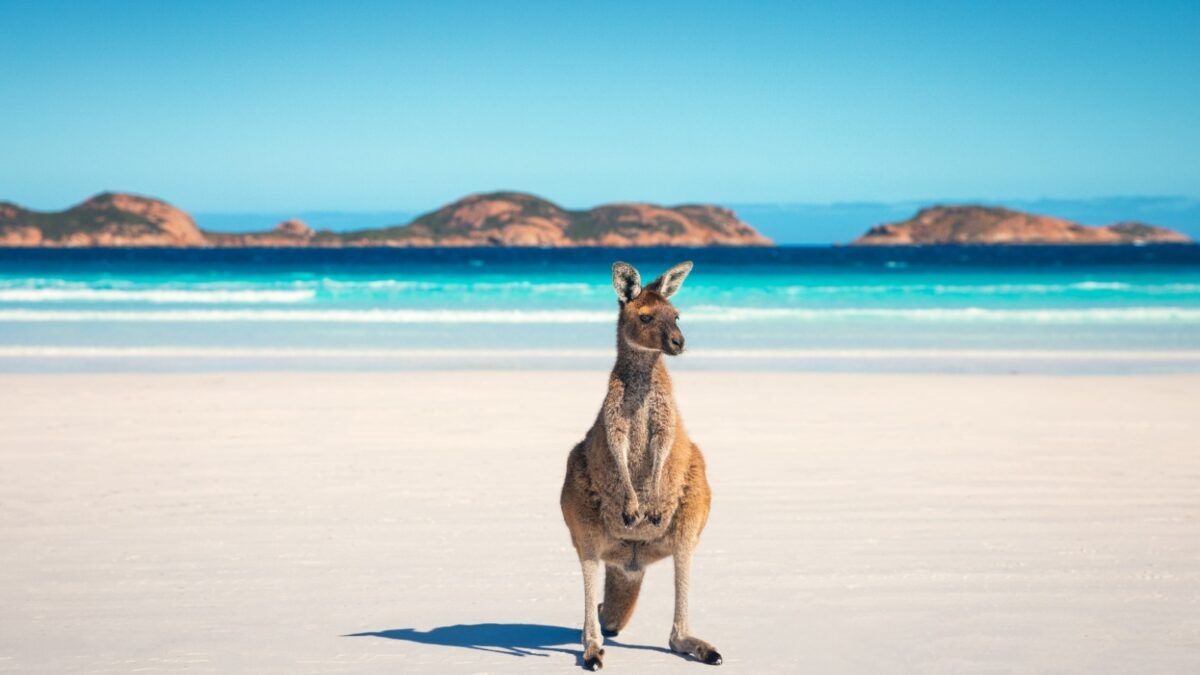
Work Certifications
August 14, 2019Los mejores trabajos del 2022 en Australia para los Estudiantes internacionales
January 28, 2022In this blog, we talk about several reasons why we believe that Australia is an amazing country to visit, be it for a holiday, to study, or to live. In June 2021, four cities in Australia were featured in The Global Liveability Index as one of the ten best cities to live in the world. The rankings are based on five broad categories: stability, healthcare, culture and environment, education, and infrastructure. Whilst exciting, this is not a foreign accolade for Australia, with several Australian cities featured in the top ten list each year, demonstrating the high quality of life offered in our country.
Here are just some of our favourite reasons why we think you should add Australia to your travel list.
Comfortable year-round weather
In Australia, you can enjoy a comfortable climate almost all year round. Although there are cities that are a little colder, like Melbourne in Victoria or Hobart in Tasmania, most of the others tend to have hot summers and mild winters, especially in cities like Sydney, Brisbane, and Darwin. Australia is well-known for its beautiful beaches and landscapes which are a much-favoured destination for Australians and visitors alike during the hot summers.
Great job opportunities
Australia is a growing country and constantly finds itself short of skilled workers. The Australian Skilled Occupation List details industries and roles in which Australia is short on workers, and you’ll be surprised to see the large number of industries on this list. Non-Australian citizens/residents may be eligible for a visa if they are qualified to work or train in an eligible skilled occupation in Australia and can and meet all other requirements. Australia is also lucky to offer the highest minimum wage in the world, at AU$21.38 per hour, and with study under your belt, your chances of earning a salary even higher than minimum wage are increased.
Friendly culture
Muchas personas antes de venir están preocupadas de dejar por un tiempo a sus amigos y familia, lo que es triste para todos. Pero lo que deben saber es que Australia es un país multicultural y muy amigable para las personas que llegan, ya que la mayoría de la gente que vive en Australia tienen amigos o familia que han pasado por lo mismo o incluso ellos mismos.En Australia la multiculturalidad se vive en todas las ciudades y la gente es muy abierta a conocer nuevas personas, es por eso que tus nuevos amigos pueden estar a la vuelta de la esquina.
Beautiful beaches and national parks
One of the most well-known features of Australia around the world is its beautiful beaches and expansive national parks. Almost every major city is within close distance to beautiful, swimmable beaches which are easily accessible by train, bus, car, or bike. These beautiful beaches, especially those closer to the bigger cities like Sydney and Melbourne, are enjoyed year-round, whether to swim, boat, walk/run, cycle, or enjoy the free public facilities provided at many beaches, including bathrooms, barbecue areas, playgrounds, and grassed areas.
Outside of the city centre, it’s easy to find pristine beaches with white sand and blue waters in many of the national parks scattered across the country. These national parks – home to dozens of species of flora and fauna – are protected by the Australian government, helping to conserve the pristine environment to be enjoyed for many years to come.
Transportation and getting around
Public transport in larger cities such as Sydney and Melbourne works very efficiently. The low population density and large open spaces of the country mean public transportation is offered more frequently, providing quicker, more accessible, and comfortable journeys. The tram or subway is the most used transportation option in these larger cities which together cover an expansive network reaching most of the metropolitan area. In other cities such as Adelaide, Perth, and Brisbane, the trains, trams and buses also work well, but given the lower population densities of the larger cities, these services operate on a less frequent basis. This means it can sometimes take a little longer to get to the destination, especially if it is not during peak-time when more services are offered to meet demand. In these smaller cities, it is often a more convenient option to travel by bicycle, car, or motorcycle, as traffic congestion is not a concern.
Excellent coffee and food culture
Coffee in Australia is a culture; something that people enjoy at the beginning of each day to prepare them for the day ahead, or as an outing when catching up with a friend or colleague. With such a strong culture, Australians have developed a refined taste for coffee, choosing to support locally roasted, family-owned, and independent cafes rather than global coffee chains. In every corner of Australia, you’ll be hard-pressed not to find a great quality coffee, but Melbourne in particular is known as the coffee capital of Australia. In fact, the city has more cafes per person than any other city in the world!
In terms of food, Australia’s multiculturalism has contributed to a global menu of food on offer across the country. With such expansive lands, meals are often served “paddock to plate,” meaning the food has been prepared with locally sourced produce from local farms or farmers markets.
Clean cities with ample space
In Australia, the standard of public cleanliness is very high, and each city is focused on improving sustainability. In every public space and household, you will often find three different coloured rubbish bins: one for green waste, one for recyclable items, and one for general waste. Australia offers the tenth lowest population density in the world, with 362sqm per 1,000 people. Given such ample space, many of Australia’s green spaces have been preserved, often with public toilets and recreation areas to encourage responsible visitation. In late 2021, Adelaide proudly became the second ever National Park City in the world after London, noting that 95% of Adelaide residents only need to travel 400 metres in order to connect with an open, green area.
Image credit: Tourism Australia

